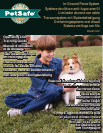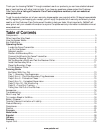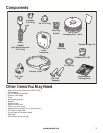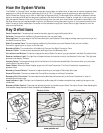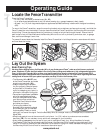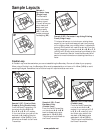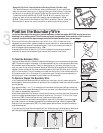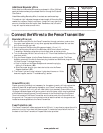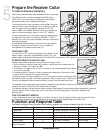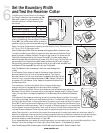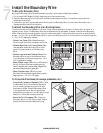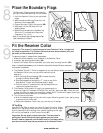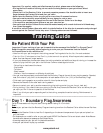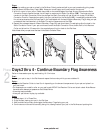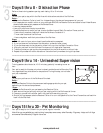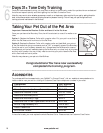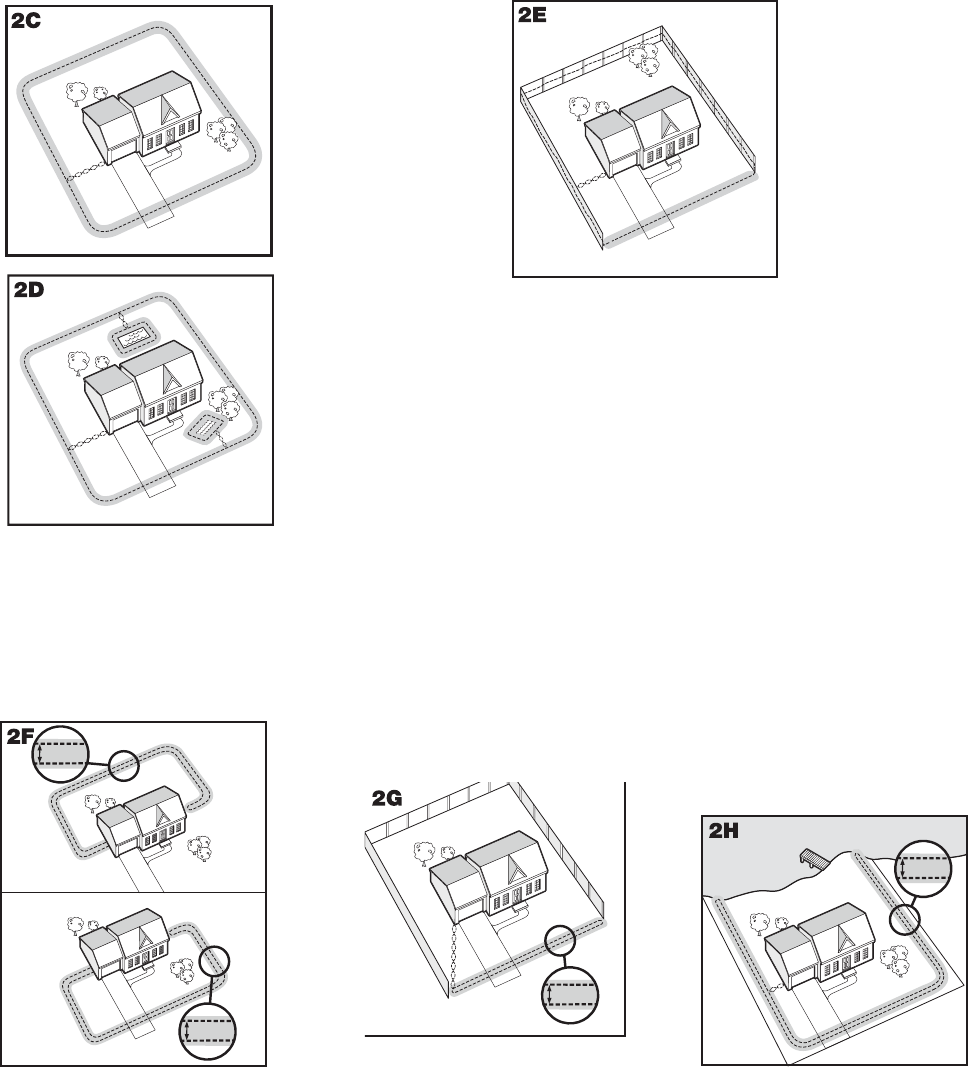
6 www.petsafe.net
Sample Layouts
Sample 1:
Perimeter Loop
(Single Loop)
The Perimeter
Loop is the most
common layout.
This will allow your
pet to freely and
safely roam your
entire property
(2C). It can also
protect pools and
landscaping (2D).
D
E
A
C
B
Sample 2 (2E): Perimeter Loop Using Existing
Fence (Single Loop)
This layout allows you to include your existing fence
as part of your layout and keep your pet from jumping
out or digging under your existing fence. It reduces the
amount of wire which will need to be buried. From the
Fence Transmitter, run the wire to A, A to B, B to C, C
to D, D to E, E to A, twist the wires from A back to the
Fence Transmitter. See the “Install the Boundary Wire”
section for more information on attaching the wire to a
fence.
Double Loop
A Double Loop must be used when you are not establishing the Boundary Zone on all sides of your property.
When using a Double Loop, the Boundary Wire must be separated by a minimum of 1-1.5 m (3-5 ft) to avoid
canceling the signal. Remember that a Double Loop will require twice as much wire.
E
F
B
A
D
C
E
F
C
A
D
B
1-1.5 m
(3-5 ft)
1-1.5 m
(3-5 ft)
Sample 3 (2F): Front or Back
Property Only (Double Loop)
From the Fence Transmitter, run
the wire to A, A to B, B to C,
C to D, D to E, E to F, make a
U-turn and follow your path all the
way back to A, keeping the wire
separated 1-1.5 m (3-5 ft). Twist
the wire from A back to the Fence
Transmitter.
B
A
1-1.5 m
(3-5 ft)
Sample 4 (2G): Front
Boundary Only
(Double Loop)
From the Fence Transmitter,
run the wire to A, A to B, B
back to A keeping the wire
separated 1-1.5 m (3-5 ft).
Twist the wire from A back to
the Fence Transmitter.
E
B
D
C
A
1-1.5 m
(3-5 ft)
Sample 5 (2H): Lake Access
(Double Loop)
From the Fence Transmitter,
run the wire to A, A to B,
make a U-turn and go to C, C
to D, D to E, make a U-turn
and follow your path all the
way back to A keeping wire
separated 1-1.5 m (3-5 ft).
Twist the wire from A back to
the Fence Transmitter.



